Surface Areas and Volumes Class 10 Notes
CBSE Class 10 Maths Surface Area and Volumes Notes:-Download PDF Here
The concept of surface area and volume for Class 10 is provided here. In this article, we are going to discuss the surface area and volume for different solid shapes such as the cube, cuboid, cone, cylinder, and so on. The surface area can be generally classified into Lateral Surface Area (LSA), Total Surface Area (TSA), and Curved Surface Area (CSA). Here, let us discuss the surface area formulas and volume formulas for different three-dimensional shapes in detail. In this chapter, the combination of different solid shapes can be studied. Also, the procedure to find the volume and its surface area in detail.
Surface Area and Volume of Cuboid
A cuboid is the region covered by its six rectangular faces. The surface area of a cuboid is equal to the sum of the areas of its six rectangular faces.
Surface area of the cuboid
Consider a cuboid whose dimensions are l × b × h, respectively.
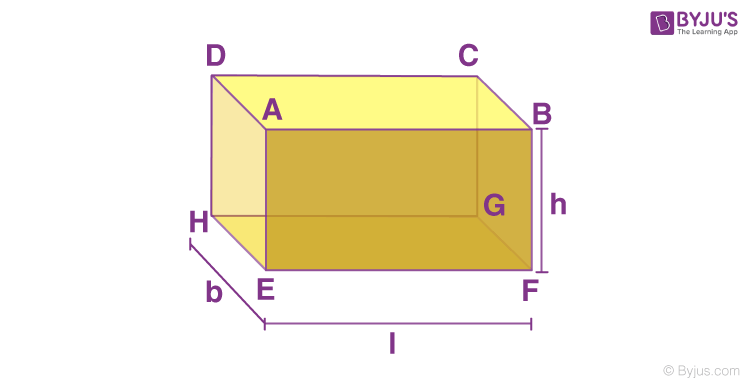
The total surface area of the cuboid (TSA) = Sum of the areas of all its six faces
TSA (cuboid) = 2(l × b) + 2(b × h) + 2(l × h) = 2(lb + bh + lh)
Lateral surface area (LSA) is the area of all the sides apart from the top and bottom faces.
The lateral surface area of the cuboid = Area of face AEHD + Area of face BFGC + Area of face ABFE + Area of face DHGC
LSA (cuboid) = 2(b × h) + 2(l × h) = 2h(l + b)
Length of diagonal of a cuboid =√(l2 + b2 + h2)
To know more about Surface Area of Cuboid, visit here.
Volume of a Cuboid
The volume of a cuboid is the space occupied within its six rectangular faces.
Volume of a cuboid = (base area) × height = (lb)h = lbh
Surface Area and Volume of Cube
A cube is a three-dimensional solid, that has six square faces, twelve edges and eight vertices.
Surface Area of Cube
For a cube, length = breadth = height
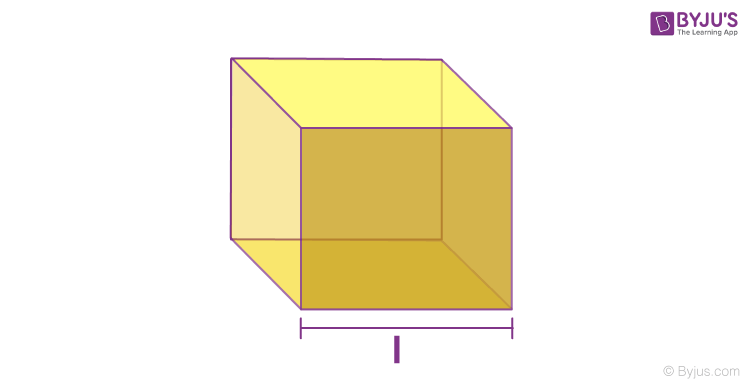
TSA (cube) =2 × (3l2) = 6l2
Similarly, the Lateral surface area of cube = 2(l × l + l × l) = 4l2
Note: Diagonal of a cube =√3l
Volume of a Cube
Volume of a cube = base area × height
Since all dimensions of a cube are identical, volume = l3
Where l is the length of the edge of the cube.
To know more about Volume of Cube and Cuboid, visit here.
For More Information On Cube And Cuboid, Watch The Below Video.

To know more about Surface Area of Cube, visit here.
Surface Area and Volume of Cylinder
A cylinder is a solid shape that has two circular bases, connected with each other, through a lateral surface. Thus, there are three faces, two circular and one lateral, of a cylinder. Based on these dimensions, we can find the surface area and volume of a cylinder.
Surface Area of Cylinder
Take a cylinder of base radius r and height h units. The curved surface of this cylinder, if opened along the diameter (d = 2r) of the circular base can be transformed into a rectangle of length 2πr and height h units. Thus,
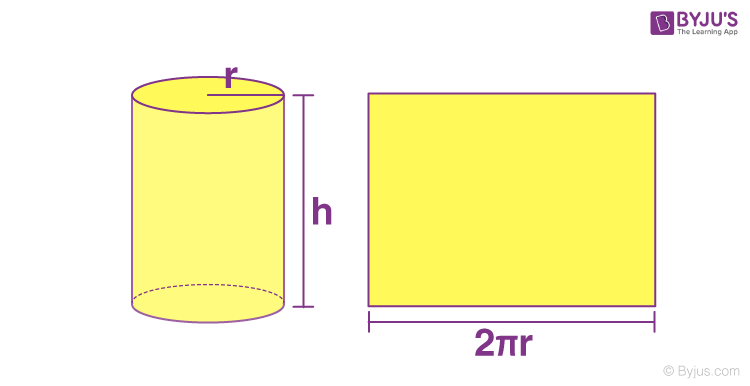
CSA of a cylinder of base radius r and height h = 2π × r × h
TSA of a cylinder of base radius r and height h = 2π × r × h + area of two circular bases
=2π × r × h + 2πr2
=2πr(h + r)
Volume of a Cylinder
Volume of a cylinder = Base area × height = (πr2) × h = πr2h
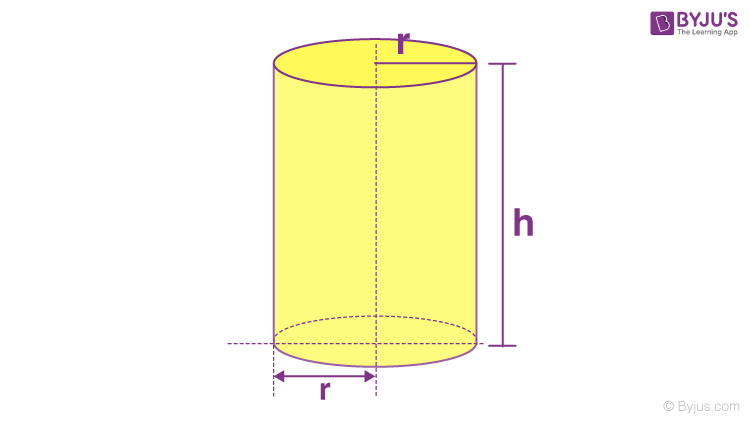
To know more about Volume of a Cylinder, visit here.
For More Information On Cylinder, Watch The Below Video.
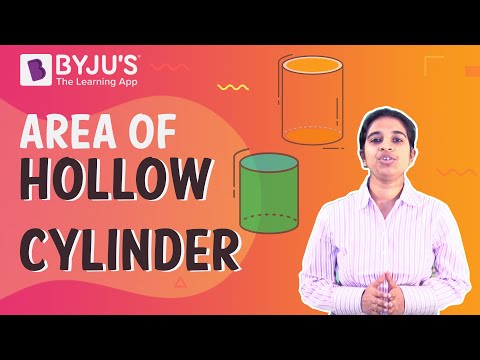
To know more about Surface Area of a Cylinder, visit here.
Surface Area and Volume of Right Circular Cone
A cone is a 3d shape that has one circular base and narrows smoothly from base to a point, called vertex.
Surface area of cone
Consider a right circular cone with slant length l, radius r and height h.
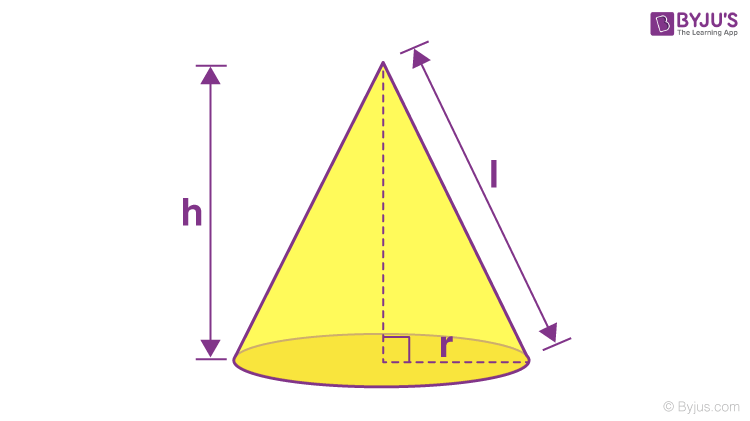
CSA of right circular cone = πrl
TSA = CSA + area of base = πrl + πr2 = πr(l + r)
To know more about Surface Area of Right Circular Cone, visit here.
Volume of a Right Circular Cone
The volume of a Right circular cone is 1/3 times that of a cylinder of the same height and base.
In other words, 3 cones make a cylinder of the same height and base.
The volume of a Right circular cone =(1/3)πr2h
Where ‘r’ is the radius of the base and ‘h’ is the height of the cone.
To know more about the Volume of a Right Circular Cone, visit here.
Surface Area and Volume of Sphere
A sphere is a solid that is round in shape and the points on its surface are at equidistant from the center.
Surface area of Sphere
For a sphere of radius r
Curved Surface Area (CSA) = Total Surface Area (TSA) = 4πr2
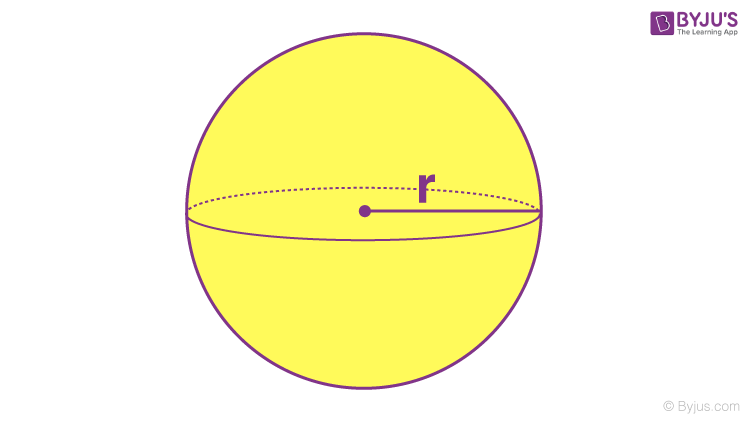
For More Information On Sphere And Hemisphere, Watch The Below Video.
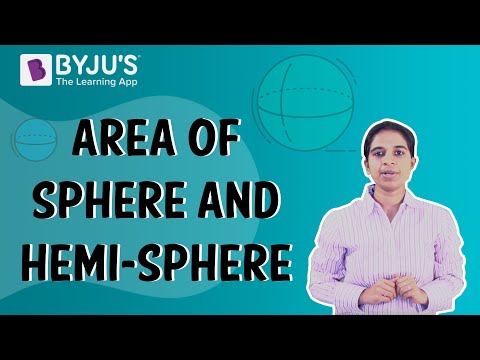
To learn more about Surface Area of Sphere, visit here.
Volume of Sphere
The volume of a sphere of radius r = (4/3)πr3
To know more about volume of a Sphere, visit here.
Surface Area and Volume of Hemisphere
A hemisphere is shape that is half of the sphere and has one flat surface. The other side of the hemisphere is shaped as a circular bowl. See the figure below.
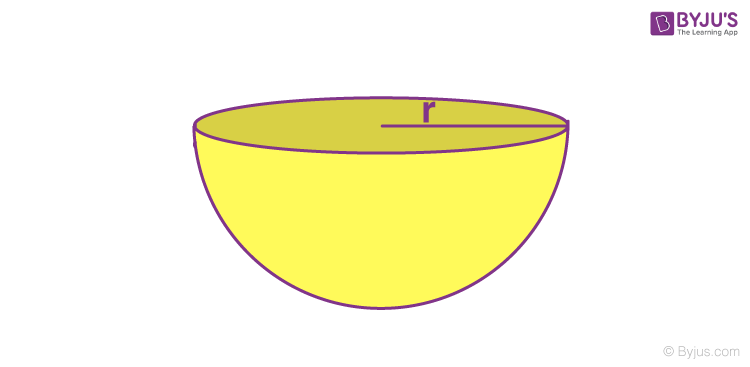
Surface Area of Hemisphere
We know that the CSA of a sphere = 4πr2.
A hemisphere is half of a sphere.
∴ CSA of a hemisphere of radius r = 2πr2
Total Surface Area = curved surface area + area of the base circle
⇒TSA = 3πr2
To know more about Surface Area of Hemisphere, visit here.
Volume of Hemisphere
The volume (V) of a hemisphere will be half of that of a sphere.
∴ The volume of the hemisphere of radius r = (2/3)πr3
To know more about Volume of Hemisphere, visit here.
Surface area and Volume of Combination of Solids
Combination of solids explains the shapes formed when two different solids are combined together. Thus, the surface area and volume for such shapes will vary from the other basic solids.
For More Information On Combination of Solids, Watch The Below Video.
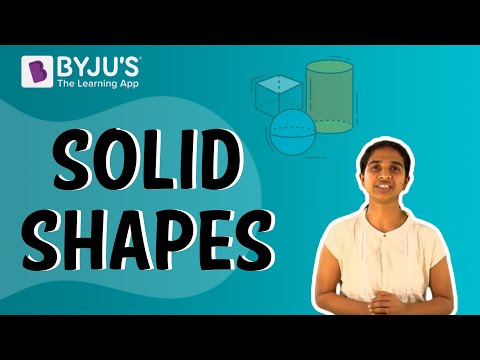
Surface Area of Combined Figures
Areas of complex figures can be broken down and analysed as simpler known shapes. By finding the areas of these known shapes, we can find out the required area of the unknown figure.
Example: 2 cubes each of volume 64 cm3 are joined end to end. Find the surface area of the resulting cuboid.
Length of each cube = 64(1/3) = 4cm
Since these cubes are joined adjacently, they form a cuboid whose length l = 8 cm. But height and breadth will remain the same = 4 cm.

∴ The new surface area, TSA = 2(lb + bh + lh)
TSA = 2 (8 x 4 + 4 x 4 + 8 x 4)
= 2(32 + 16 + 32)
= 2 (80)
TSA = 160 cm2
Volume of Combined Solids
The volume of complex objects can be simplified by visualising them as a combination of shapes of known solids.
Example: A solid is in the shape of a cone standing on a hemisphere with both their radii being equal to 3 cm and the height of the cone is equal to 5 cm.
This can be visualised as follows :
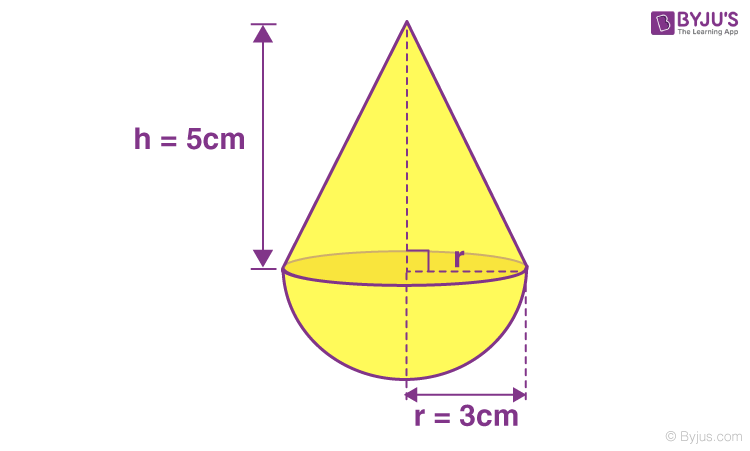
V(solid) = V(Cone) + V(hemisphere)
V(solid) = (1/3)πr2h + (2/3)πr3
V(solid) = (1/3)π(9)(5) + (2/3)π(27)
V(solid) = 33π cm3
To know more about Volume of a Combination of Solids, visit here.
Surface area and volume of Frustum of a cone
When a solid is cut by a plane, then another form of solids is formed. One such form of solid is the frustum of a cone, which is formed when a plane cuts a cone parallelly to the base of the cone. Let us discuss its surface area and volume here.
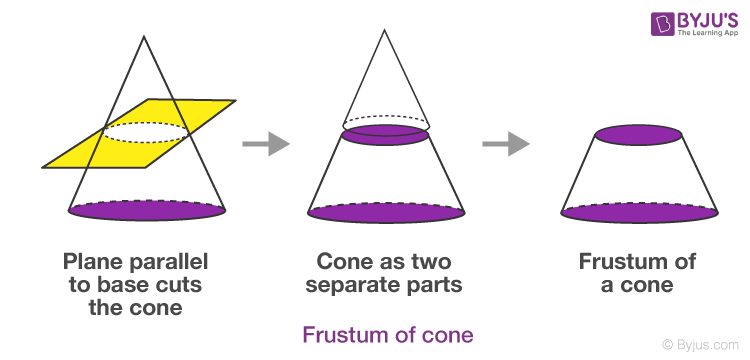
If a right circular cone is sliced by a plane parallel to its base, then the part with the two circular bases is called a Frustum.
Surface Area of a Frustum

CSA of frustum =π(r1+r2)l, where l= √[h2+(r2 – r1)2]
TSA of the frustum is the CSA + the areas of the two circular faces = π(r1 + r2)l + π(r12 + r22)
Volume of a Frustum
The volume of a frustum of a cone =(1/3)πh(r12 + r22 + r1r2)
To know more about Frustum, visit here.
Solved Example
When a solid is converted into another solid of a different shape (by melting or casting), the volume remains constant.
Suppose a metallic sphere of radius 9 cm is melted and recast into the shape of a cylinder of radius 6 cm. Since the volume remains the same after a recast, the volume of the cylinder will be equal to the volume of the sphere.
The radius of the cylinder is known however the height is not known. Let h be the height of the cylinder.
r1 and r2 be the radius of the sphere and cylinder, respectively. Then,
V(sphere) = V(cylinder)
⇒4/3πr13 = πr22h
⇒4/3π(93) = π(62)h (On substituting the values)
⇒h = 27cm
To know more about Shape Conversion of Solids, visit here.
More Articles for Class 10
- Arithmetic Progression Class 10 Notes
- Circles Class 10 Notes
- Constructions Class 10 Notes
- Coordinate Geometry Class 10 Notes
- Introduction To Trigonometry Class 10 Notes
- Polynomial Class 10 Notes
- Probability Class 10 Notes
- Quadratic Equation Class 10 Notes
- Real Numbers Class 10 Notes
- Some Applications Of Trigonometry Class 10 Notes
- Statistics Class 10 Notes
- Triangles Class 10 Notes